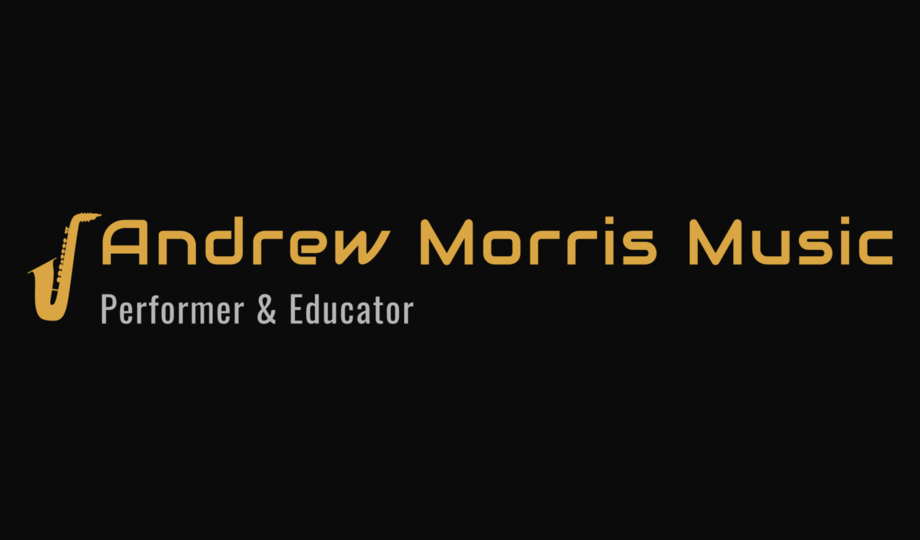
Guitar Page
Welcome to the online home of Andrew Morris, a dedicated Guitar Teacher with many years of experience.
Learning to play the Guitar can be a delightful and fulfilling experience, regardless of whether you are a complete beginner or an experienced musician looking to enhance your skills.
With my customised method of teaching, I can assist you in attaining your objectives and unlocking your full potential on the instrument.
Throughout my lessons, we will cover the fundamentals of Guitar technique as well as more intricate concepts such as improvisation and music theory.
I will collaborate with you to devise a personalised lesson plan that caters to your individual needs and interests.
What distinguishes my lessons is my emphasis on establishing a strong foundation of Guitar technique.
We will focus on cultivating beautiful-sounding chords, mastering lead lines and enhancing your finger dexterity and ability across the neck of the Guitar.
My lessons are designed to be fun and to help you make progress at your own pace.
I offer:
- Private Guitar lessons, one-to-one for all ages and skill levels either at my home studio or online via FaceTime, Zoom, etc.
- Music Theory lessons to improve your understanding of music theory and to help you apply it to your playing
- Exam preparation to help you prepare for Guitar exams, competitions and auditions
Lessons are available in Rock & Pop, Jazz and Classical styles.
For more information on why you should have a Music Teacher when learning an instrument see the top post on my Blog page.
If you are still unsure whether music lessons are for you then why not book a trial lesson with me, with no obligation to continue afterwards, to see if you personally can gain the benefits and improvements available when studying with me and to see if we are a good fit to work together.
Ready to start learning or improving on Guitar?
Contact me today via music@andymorris.co.uk / 07973 393647
___________________
The Guitar: A Guide for Beginners
The Guitar is a versatile musical instrument that has been a favorite among musicians for centuries. Whether you’re interested in playing for fun or pursuing a career in music, the guitar is a great choice. In this post, we’ll look at what you need to know to get started playing the guitar.
Types of Guitars:
There are many different types of guitars, but the two most common are acoustic and electric. An acoustic guitar is made of wood and uses steel strings that vibrate against the body to create sound. An electric guitar uses magnetic pickups to convert the vibration of the strings into an electrical signal, which can then be amplified and played through a speaker.
Getting started:
To get started playing the guitar, you’ll need a few basic items:
- A guitar: Choose an acoustic or electric guitar based on your preferences and goals.
- A guitar case: To protect your guitar when you’re not playing.
- A guitar strap: To keep the guitar in place while you play.
- A tuner: To keep your guitar in tune.
- A pick: To pluck the strings (unless only finger picking style preferred).
- A guitar cable: For electric guitars, you’ll need a cable to connect the guitar to an amplifier.
Learning to play:
There are many different approaches to learning to play the guitar, but here are three common options:
- Private lessons: You can take private lessons from a guitar instructor who can provide personalised guidance and feedback.
- Group classes: You can join a group class where you can learn with other students and benefit from the instructor’s expertise.
- Self-taught: You can learn to play the guitar on your own by watching videos, reading books, or using online resources, although this is not however the best way of doing it as bad habits are not usually picked up which can slow or stall your progress.
Practising:
Practice is key to becoming a successful guitarist. Start with simple exercises and gradually increase the difficulty as you become more comfortable with the instrument. Here are a few tips to help you get the most out of your practice sessions:
- Set aside dedicated practice time each day.
- Start with basic chords and work your way up to more complex ones.
- Practice playing along with songs you like to help keep you motivated.
- Focus on proper technique and form to avoid bad habits that could be difficult to break later.
In conclusion, the guitar is a wonderful instrument that offers endless possibilities for self-expression and creativity. Whether you’re just starting out or you’re an experienced player, there’s always something new to learn and explore. With dedication and practice, you can become a skilled and confident guitarist.
Some good guitar tunes to learn:
Here are some popular and beginner-friendly(ish) guitar tunes that you can try:
- "Wonderwall" by Oasis
- "Sweet Child o' Mine" by Guns N' Roses
- "Hotel California" by The Eagles
- "Stairway to Heaven" by Led Zeppelin
- "Here Comes the Sun" by The Beatles
- "Summer of '69" by Bryan Adams
- "Tears in Heaven" by Eric Clapton
- "Smoke on the Water" by Deep Purple
- "Knockin' on Heaven's Door" by Bob Dylan
- "Brown Eyed Girl" by Van Morrison
Remember to start slowly and focus on proper technique and form. With time and practice, you will be able to master these tunes and play them with ease.
The first guitar pedals to buy:
As a beginner guitarist, there are a few essential guitar pedals that can help you enhance your sound and experiment with different effects. Here are some of the most popular and useful pedals for beginners:
- Distortion Pedal: Adds a heavy, crunchy sound to your guitar that is perfect for rock, metal, and other heavy genres.
- Delay Pedal: This creates a repeating echo of your guitar sound, adding depth and dimension to your playing.
- Chorus Pedal: Adds a rich, shimmering effect to your guitar sound, making it sound like multiple guitars are playing at once.
- Tuner Pedal: A convenient and accurate way to keep your guitar in tune while playing live or in the studio.
- Overdrive Pedal: Adds a mild, warm distortion to your guitar sound that is great for blues, rock, and other styles.
When choosing your first pedals, it's important to consider your playing style and the type of music you want to play. These pedals can be purchased separately or in multi-effects pedals that combine multiple effects into one unit.
The difference between a valve amp and a solid-state amp
Valve (or tube) amps and solid-state amps are two different types of guitar amplifiers that use different technology to amplify the sound of your guitar. Here's a quick overview of the main differences between the two:
Valve Amps:
- Use vacuum tubes to amplify the guitar signal.
- Have a warm, smooth, and natural sound with a distinctive overdrive when pushed hard.
- Are typically more expensive than solid-state amps.
- Require more maintenance, as tubes need to be replaced periodically.
- Can be more delicate and prone to failure than solid-state amps.
Solid-State Amps:
- Use transistors to amplify the guitar signal.
- Have a clean, crisp, and more neutral sound.
- Are typically more affordable than valve amps.
- Require less maintenance and are more reliable than valve amps.
- Often have more features and controls, including built-in effects and modelling capabilities.
Ultimately, the choice between a valve amp and a solid-state amp will come down to personal preference and the type of sound you want to achieve. Both types of amplifiers have their pros and cons, and many guitar players own and use both types of amps for different playing situations.
The different type of practice amps for guitarists:
For guitarists, practice amps are small, portable amplifiers that are designed for use at home or in a studio setting. Here are some of the different types of practice amps available for guitarists:
Combo Amps: A combination of an amplifier and speaker in one unit, these are the most common type of practice amp and offer convenience and portability.
- Mini Amps: Extremely compact and portable amps that are great for guitarists on the go.
- Modelling Amps: Digital amps that simulate the sound of a variety of classic and modern amplifiers and effects. These amps often come with built-in effects and can be a great option for guitarists who want to experiment with different sounds.
- Headphone Amps: These amps have a headphone jack, allowing you to play silently through headphones, making them ideal for use in flats or apartments or late-night practice sessions.
- Amp Simulators: Software-based amp simulators that can be used with a computer and an audio interface. These simulators provide an extensive range of amp and effects simulations, making them a great option for recording and production work.
When choosing a practice amp, it's important to consider your needs, budget, and the type of sound you want to achieve. Some guitarists prefer a simple, no-frills practice amp, while others prefer a more feature-rich amp that provides a wide range of tone options.
The different scale lengths of guitars:
- The scale length of a guitar refers to the distance between the nut (at the headstock end) and the bridge (at the body end) of the guitar, along the strings. Different scale lengths produce different tones and playing feels, so it's important to choose a scale length that suits your playing style and the type of music you want to play. Here are some of the most common scale lengths for guitars:
- Fender-style 25.5-inch Scale: This is the most common scale length for electric guitars, including the Fender Stratocaster and Telecaster. It provides a bright and snappy tone, with a comfortable feel for playing chords and lead lines.
- Gibson-style 24.75-inch Scale: This scale length is commonly used for Gibson Les Paul and SG electric guitars, as well as some hollow-body and archtop guitars. It produces a warmer and rounder tone, with a slightly more relaxed feel for playing chords.
- Baritone 27-inch Scale: This longer scale length is commonly used for baritone guitars, which are tuned lower than standard guitars. It provides a deep and powerful tone, with a tighter feel for playing lead lines.
- Classical and Flamenco 650mm Scale: This scale length is commonly used for classical and flamenco guitars. It provides a bright and articulate tone, with a comfortable feel for playing fingerpicking and strumming.
- Parlour and Travel Guitars 22-24 inches: These guitars have shorter scale lengths, making them ideal for small hands and for travelling. They have a soft and warm tone, with a more relaxed feel for playing chords and rhythm.
It's worth noting that the scale length of a guitar can have a significant impact on its playability, tone, and overall feel, so it's important to choose a scale length that feels comfortable for you and suits the type of music you want to play.

